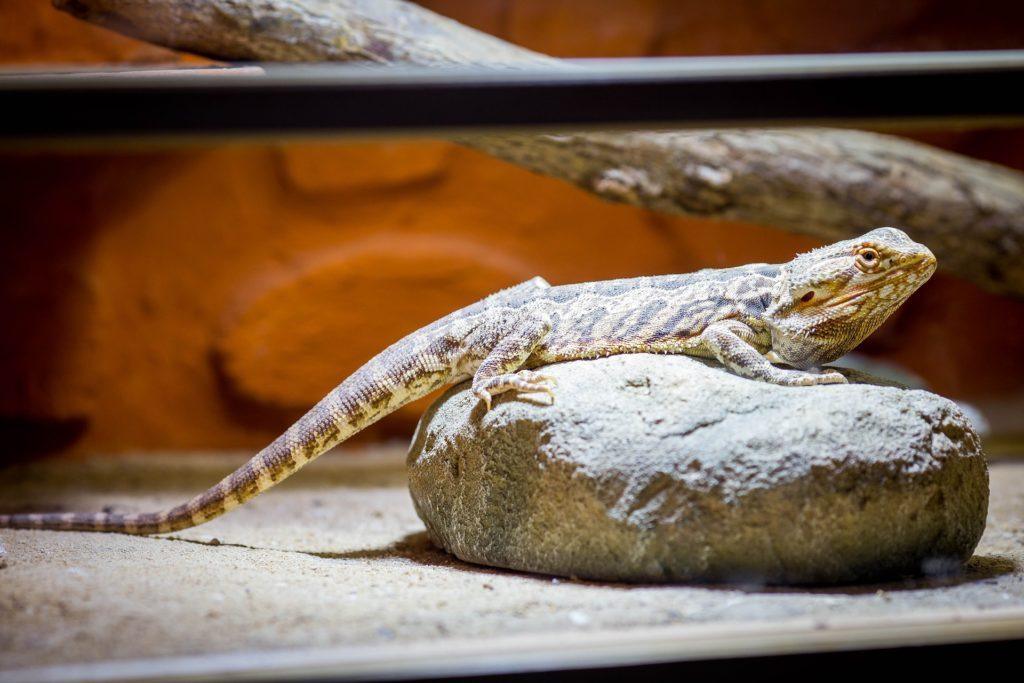When it comes to giving your bearded dragon ample room to hunt, play, and explore… you definitely don’t want to underestimate their tank size!
Giving your beardie a habitat (opens in new tab) that is too small can not only lead to stunted growth if they’re a juvenile, but can actually lead them to become depressed, stressed, and in some instances, developing health issues!
To discover the best bearded dragon tank size at any age, just keep reading! Or feel free to use the quick navigation below to be taken to a specific topic.
In This Article
What Is the Best Bearded Dragon Tank Size?
How Big Does a Bearded Dragon Tank Need to Be?
When it comes to having the best tank for bearded dragons, you’re primarily going to want to consider their age.
Only once the dragon is fully grown does overall size come into play.
Baby bearded dragons will do best in tanks no smaller than 20 gallons and ideally 40 gallons (36 inches long X 18 inches wide X 18 inches deep).
Young adults and adults should have at minimum a tank of 55 gallons, but ideally 75 gallons.
Large dragons over 20 inches will do best in tanks at 75 gallons, but should really be given a tank of 120 gallons, as this will really allow for them to roam around and get their exercise.
For exceptionally large dragons, it is really doing them a disservice to be in anything less than 120 gallons, unless you plan on giving them hours of supervised play time outside of their tank every single day!
Baby Bearded Dragon Tank Size
If you have a baby bearded dragon, under 10 inches or so, then a 20-gallon tank is fine to house them in temporarily.
Babies don’t need a whole lot of room to exercise and too large of a tank can actually make catching their food very difficult for them!
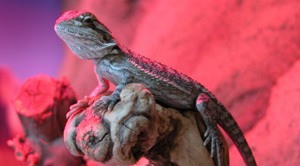
Remember, all baby creatures need time to become stealthy hunters and as such, your baby bearded may struggle to catch his food should you give it plenty of room to run away.
Can a Baby Bearded Dragon Live in a 40-Gallon Tank?
Babies can live in a 40 gallon (38 inches long X 18 inches wide X 18 inches deep) tank, though I wouldn’t necessarily recommend going much bigger if you can help it!
If you house a baby in a tank of this size or larger, keep a close eye on them and observe how adeptly they are able to actually catch and eat their live food, primarily crickets.
If they seem to be struggling, you will definitely want to hand feed them.
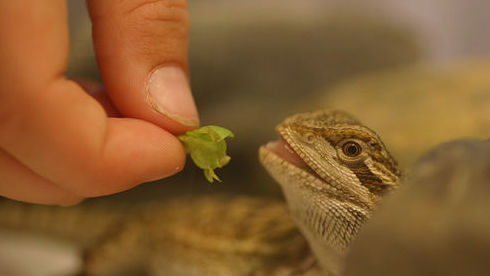
Full Grown Bearded Dragon Tank Size
Again, depending on the size of your adult bearded dragon the tank size will vary!
Regular adult bearded dragons should be in a tank at least 55 gallons, but ideally 75 gallons.
Dragons upwards of 20 inches should be kept in a tank no smaller than 75 gallons and ideally 120 gallons.
Remember, giving your dragon ample room to roam in his tank will not only make him happier, but healthier as well!
How Long Does it Take for a Bearded Dragon to Grow to Full Size?
Bearded dragons grow rather quickly, so don’t be alarmed if your itty-bitty baby suddenly needs an upgraded tank within a few months!
This is simply just part of owning a bearded dragon.
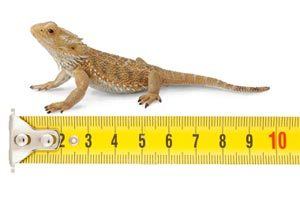
The rate at which bearded dragons grow will vary depending on their genetics and diet, but typically you can expect to see your dragon reach full size around 15 to 18 months.
However, that isn’t to say your dragon can’t expand in girth still, especially if you are overindulging them with too much food.
Best Size Tank for 2 Bearded Dragons
Although housing two bearded dragons is very risky (dragons can often be territorial and fight), if you absolutely must go this route then you should really combine two 75 gallon tanks or have something of similar size (at a minimum) built.
However, I will never advise you to house two dragons together UNLESS they were hatchlings together and have never been separated and get along swimmingly.
But still, I highly recommend keeping a close eye and having an additional cage ready in case you need to rescue one.
It’s not uncommon for siblings (especially males) to turn on one another as they get older!
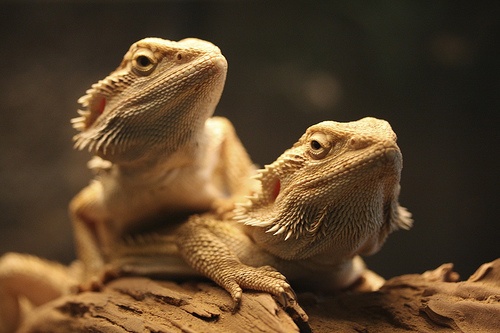
This can lead to fights, injuries, food hogging, and even one dragon laying claim to the basking spot and refusing to share!
Just be really careful if you go this route. The consequences can be deadly.
When Should You Get a Bigger Tank for Your Bearded Dragon?
If you’re on a budget, you can always start with a “baby” sized tank between 20 – 40 gallons and size up to something between 75 and 120 gallons once your beardie is 10 inches long.
20 gallons is really only going to be fit for a beardie below 10 inches, and since they grow rather fast, this may only be 3 months or less!
It’s best in my opinion, to start out with a 55 gallon tank and upgrade them to a 120 gallon once they reach around 15 inches.
If you need help selecting a vendor, I use and highly recommend Carolina Custom Cages to house your beardie. They offer a wide variety of sizes and good deals on terrariums.
Remember, 120 gallons is going to provide them with so much more space and entertainment, giving them a happier life.
Wrapping Up Bearded Dragon Tank Size
I hope this article provided you with the clarity on the best bearded dragon tank size for your pet!
One last word of advice, it is always better to go bigger than smaller… so if you can afford the extra space 100% go for it!
Your beardie’s happiness and health are more than worth it.
